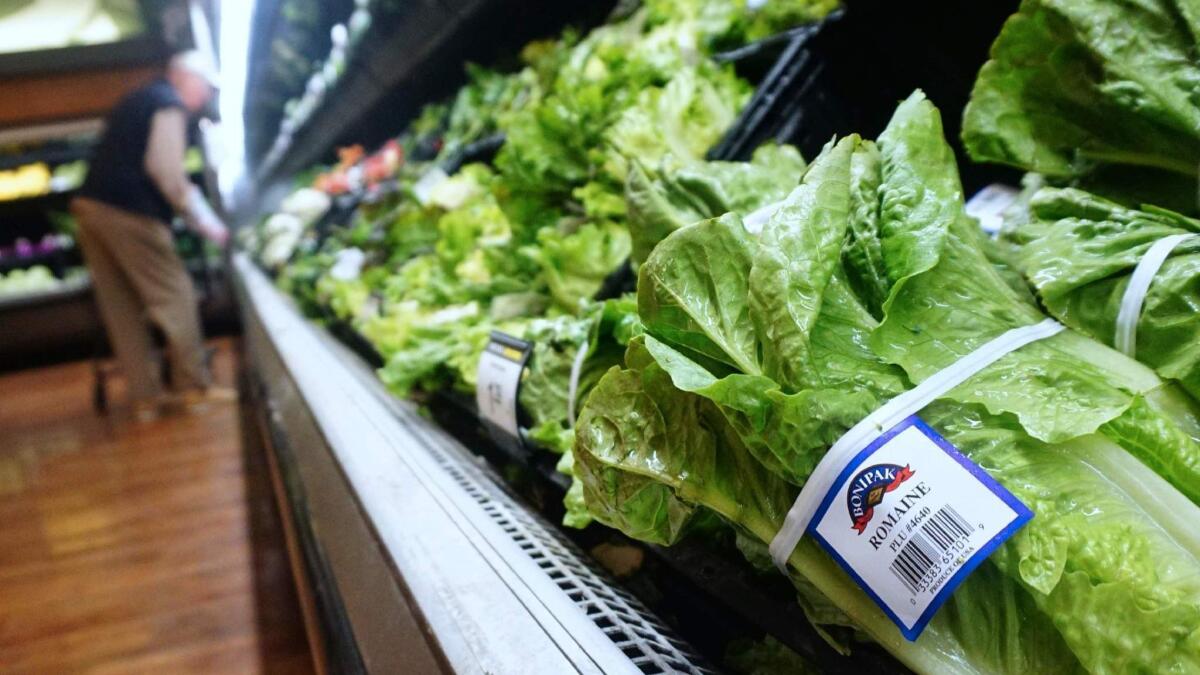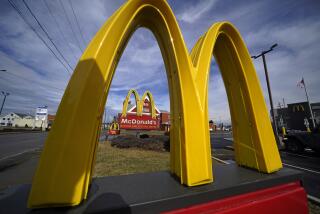E. coli still haunts desert romaine lettuce season

Lettuce growers in the desert valleys of the U.S. Southwest will face more federal scrutiny during the winter growing season, in hopes of preventing the type of contamination with E. coli bacteria that killed five and sickened another 205 people earlier this year.
The Food and Drug Administration for the first time will routinely test samples of romaine coming from the lower Colorado River area in Arizona and California, which will begin its harvest this month and continue through April.
Growers in both states also have committed to treating irrigation water drawn from canals that pass within 400 feet of a cattle feed lot, and will triple the distance between their fields and those feeding operations.
The FDA has implicated a Wellton, Ariz., feed lot that housed more than 100,000 head of cattle as the most plausible source of a toxin-producing bacteria strain, known as O157:H7, that caused the outbreak that spread to 36 states last spring.
But FDA finds itself in a bind. Following a Trump administration edict to ease regulation across all industries, the agency last month announced further delays in regulations that would address issues such as safety standards for water used to irrigate crops.
On Thursday, FDA sent a stern warning to the state agricultural departments it relies on to enforce produce safety rules, saying its findings on the outbreak “show that our approaches to prevent leafy greens contamination must change to protect public health.”
The quasi-governmental groups formed by both states to enforce federal safety rules countered Friday that they were well ahead of FDA’s regulations.
“The industry as a whole took what happened seriously. We took steps to raise what we consider to be an already high bar for food safety even higher,” said Scott Horsfall, CEO of the California Leafy Greens Marketing Agreement, which was formed after a deadly E. coli outbreak in spinach from the Salinas Valley in 2006.
“I think consumers can be assured that the industry is doing everything it can to ensure that the product is safe,” Horsfall added.
Food safety experts are skeptical, largely because the danger to produce extends to areas where FDA has limited jurisdiction, including cattle feed lots that answer to the Agriculture Department.
“None of our federal agencies do enough to regulate pathogens in the feed lots,” said Sarah Sorscher, deputy director of regulatory affairs for the Center for Science in the Public Interest. “There’s nothing illegal about having O157:H7 in your cattle. You just can’t have it in your beef.”
Horsfall said produce growers and the beef industry are at least talking over the fence about the issue.
“There certainly is more communication between the beef industry and the produce industry than what I have seen in the past, and I think that is a good thing,” he said.
The FDA reminded state agricultural officials that growers have to comply with produce safety rules enacted three years ago as part of the 2010 Food Safety Modernization Act (FSMA) — the first reform of the nation’s food safety laws since the 1930s.
Nonetheless, the agency acknowledged that it has delayed a provision for testing irrigation water, to “consider how we might further reduce the regulatory burden or increase flexibility.”
The move is part of a broader Trump administration promise to ease regulation on industry. Sorscher called that rationale “industry-speak for reducing enforcement.”
Horsfall said monthly water testing standards already enforced by the growers’ groups meet what FDA has proposed under the food safety act. “All of our producers of leafy greens are required to test all of their water on a monthly basis,” he said. “It will behoove the government to get their final regs in place.”
The California Department of Food and Agriculture said Friday it has increased its audits of produce operations this fall by 30%, and is pushing to ensure that any faults are corrected within the same growing season.
The deadly strain of E. coli that sickened 210 people was found in several test samples along a 3.5-mile stretch of an irrigation canal centered around a cattle feed lot in Wellton, according to the FDA’s final report.
The canal water was used to mix pesticides that were sprayed on crops, which also were damaged during a February freeze, making them more susceptible to infection, FDA said in the report.
The agency said it believes the bacteria came from cattle from an adjacent feed lot — its investigative team found “no evidence in support of alternative explanations.” Tests from limited samples at the lot did not show evidence of the bacterial strain, the agency said.
FDA did not identify the lot, but its map coincides with satellite images of the McElhaney feed lot, then owned by the U.S. branch of Brazil’s JBS, the world’s largest processor of beef and pork. No other lot is located along that bend of the canal, and several sources confirmed its identity to the Los Angeles Times.
The McElhaney lot was sold in March as part of a $200-million deal to offload the Five Rivers Cattle branch to several investment groups. JBS USA officials in Greeley, Colo., could not be contacted for comment.
The outbreak first was reported in March, according to FDA, which added that the bacteria could have been in the canal for several months prior to the first cases.
Follow me: @LATgeoffmohan
More to Read
Inside the business of entertainment
The Wide Shot brings you news, analysis and insights on everything from streaming wars to production — and what it all means for the future.
You may occasionally receive promotional content from the Los Angeles Times.










